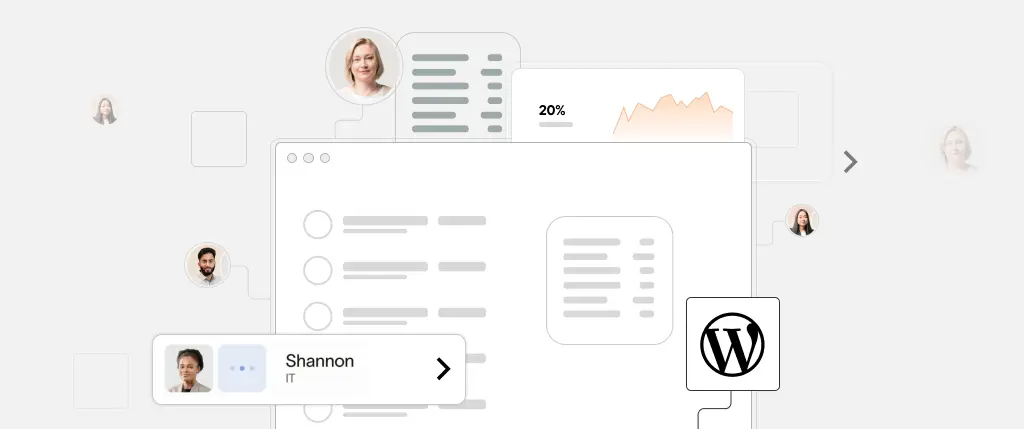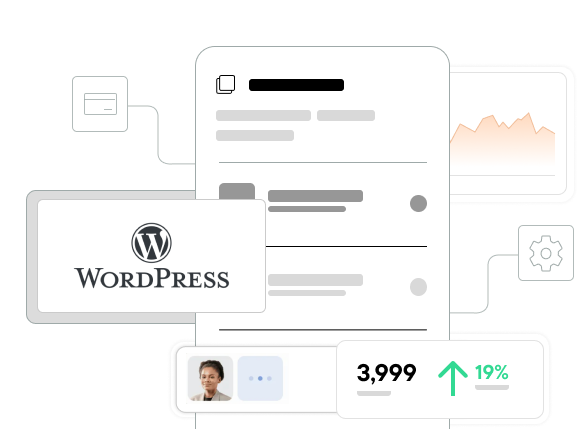WordPress and marketing automation are a powerful combination for modern digital growth. If you’re using WordPress to power your website or blog, integrating it with tools like HubSpot, ActiveCampaign, and Zapier can turn your site into a fully automated lead-generation machine.
From capturing leads to sending personalized emails, syncing data to CRMs, and triggering workflows – these platforms let you automate repetitive marketing tasks and scale without added effort.
In this guide, we’ll explore how to connect WordPress with HubSpot, ActiveCampaign, and Zapier using both plugins and custom API solutions. Whether you run a SaaS platform, marketing agency, or content-driven blog, you’ll find practical strategies to implement WordPress and marketing automation efficiently.
What Is Marketing Automation?
Marketing automation is the process of using software to automate repetitive marketing tasks like:
- Email marketing
- Lead nurturing
- Data segmentation
- CRM updates
- Behavioral triggers
It helps you streamline the customer journey, improve conversion rates, and save time.
How WordPress Supports Marketing Automation
WordPress and marketing automation work together by making WordPress your front-end lead capture tool and automation software your engine for follow-ups and data syncing.
Key platforms:
- HubSpot – CRM with marketing automation, chat, and analytics.
- ActiveCampaign – Specializes in email automation and behavioral segmentation.
- Zapier – Connects WordPress with thousands of other apps for workflow automation.
Integrating WordPress with HubSpot
1. Use the Official Plugin
Install HubSpot for WordPress:
- Adds live chat, forms, and popups
- Syncs captured data with HubSpot CRM
- Includes basic analytics dashboard
2. Add HubSpot Tracking Code Manually
For more control:
add_action('wp_head', function() {
?>
<script type="text/javascript" id="hs-script-loader" async defer src="//js.hs-scripts.com/YOUR-HUB-ID.js"></script>
<?php
});3. Send Data via HubSpot API
If using a custom form:
$response = wp_remote_post( 'https://api.hubapi.com/contacts/v1/contact', [
'body' => json_encode([
'properties' => [
['property' => 'email', 'value' => $email],
['property' => 'firstname', 'value' => $first_name]
]
]),
'headers' => [
'Content-Type' => 'application/json',
'Authorization' => 'Bearer YOUR-HUBSPOT-TOKEN'
]
]);Integrating WordPress with ActiveCampaign
1. Use ActiveCampaign’s Official Plugin
Available via ActiveCampaign for WordPress:
- Adds embed forms
- Enables site tracking
- Allows tagging and segmentation
2. Manual Form Embed
Grab the HTML from ActiveCampaign and paste it into your template or use a shortcode.
3. Use the API
$response = wp_remote_post('https://YOUR_ACCOUNT.api-us1.com/api/3/contacts', [
'headers' => [
'Api-Token' => 'YOUR_API_TOKEN',
'Content-Type' => 'application/json',
],
'body' => json_encode([
'contact' => [
'email' => $email,
'firstName' => $first_name,
]
])
]);Integrating WordPress with Zapier
Zapier bridges WordPress with thousands of apps like Slack, Mailchimp, and Google Sheets.
1. Use a Zapier-Compatible Form Plugin
Tools like WPForms, Gravity Forms, and Formidable Forms support direct Zapier integration.
2. Create a Zap to Catch a Webhook
Create a new Zap:
- Trigger: Webhook > Catch Hook
- Action: Any app (e.g., Mailchimp, Notion, Slack)
3. Send a Webhook from WordPress
wp_remote_post('https://hooks.zapier.com/hooks/catch/123456/abcde/', [
'body' => [
'name' => 'John Doe',
'email' => '[email protected]',
'interest' => 'Newsletter'
]
]);Best Practices for WordPress and Marketing Automation
✅ Minimize Plugin Bloat
Ensure GDPR compliance with opt-in checkboxes for form submissions.
✅ Avoid Bloat
Use only the automation features you need. Avoid loading full CRM dashboards if you’re only syncing forms.
✅ Queue API Calls
Use WP-Cron or Action Scheduler to handle background tasks instead of real-time requests.
✅ Keep API Keys Secure
Never expose them in front-end code. Store securely in wp-config.php:
define('AC_API_KEY', getenv('AC_API_KEY'));Sample Zapier Webhook Endpoint in WordPress
add_action('rest_api_init', function () {
register_rest_route('custom/v1', '/webhook', [
'methods' => 'POST',
'callback' => 'handle_webhook_data',
'permission_callback' => '__return_true',
]);
});
function handle_webhook_data($request) {
$data = $request->get_json_params();
return new WP_REST_Response(['status' => 'ok'], 200);
}Conclusion
WordPress and marketing automation make an unbeatable combo for modern marketers. By integrating with tools like HubSpot, ActiveCampaign, and Zapier, you’ll automate lead capture, email outreach, and data syncing – without writing complex workflows manually.
When done right, marketing automation helps you scale, personalize, and focus more on strategy than on repetitive tasks.
How Sitebox Powers WordPress and Marketing Automation
Sitebox is built to complement your automation workflows:
- 🚀 API-First – Send structured WordPress data to any CRM or automation tool.
- 🔄 CRM Integrations – Built-in compatibility with HubSpot, ActiveCampaign, and others.
- ✅ Secure Background Processing – Sitebox handles queuing, retries, and rate-limits.
- 🧱 Structured Content – Author content once and use it across personalized campaigns.
With Sitebox, WordPress and marketing automation become more than just connected – they become truly integrated.



